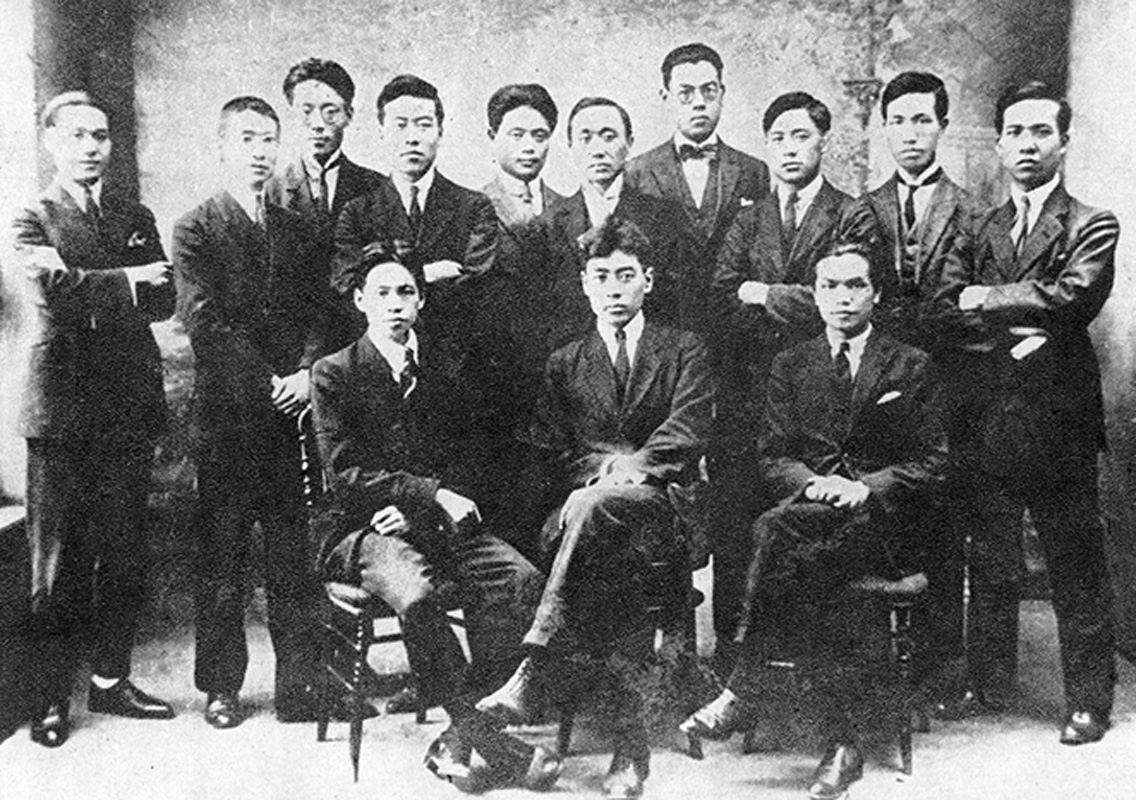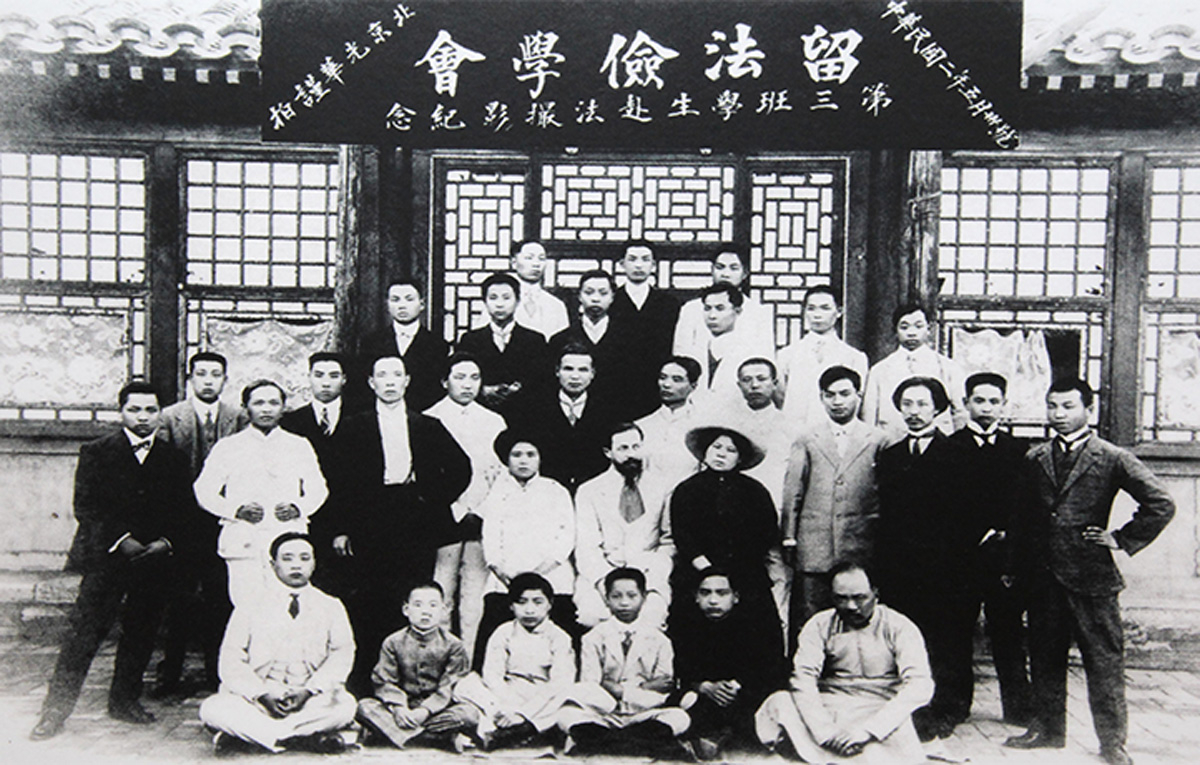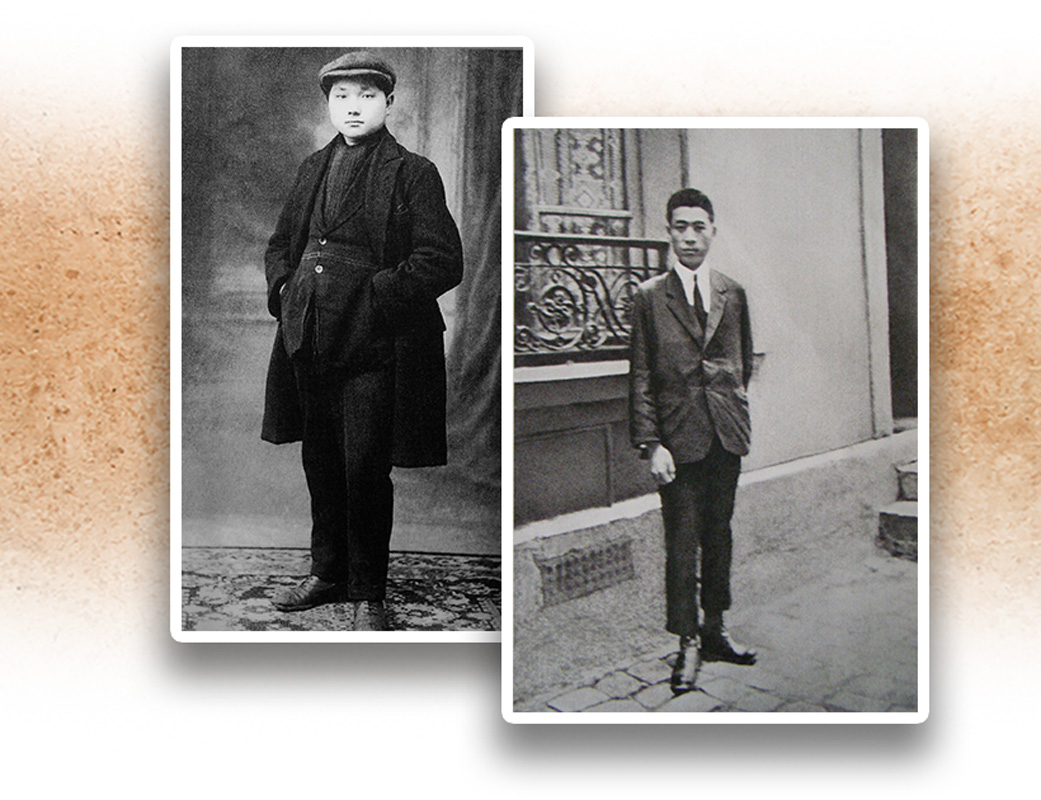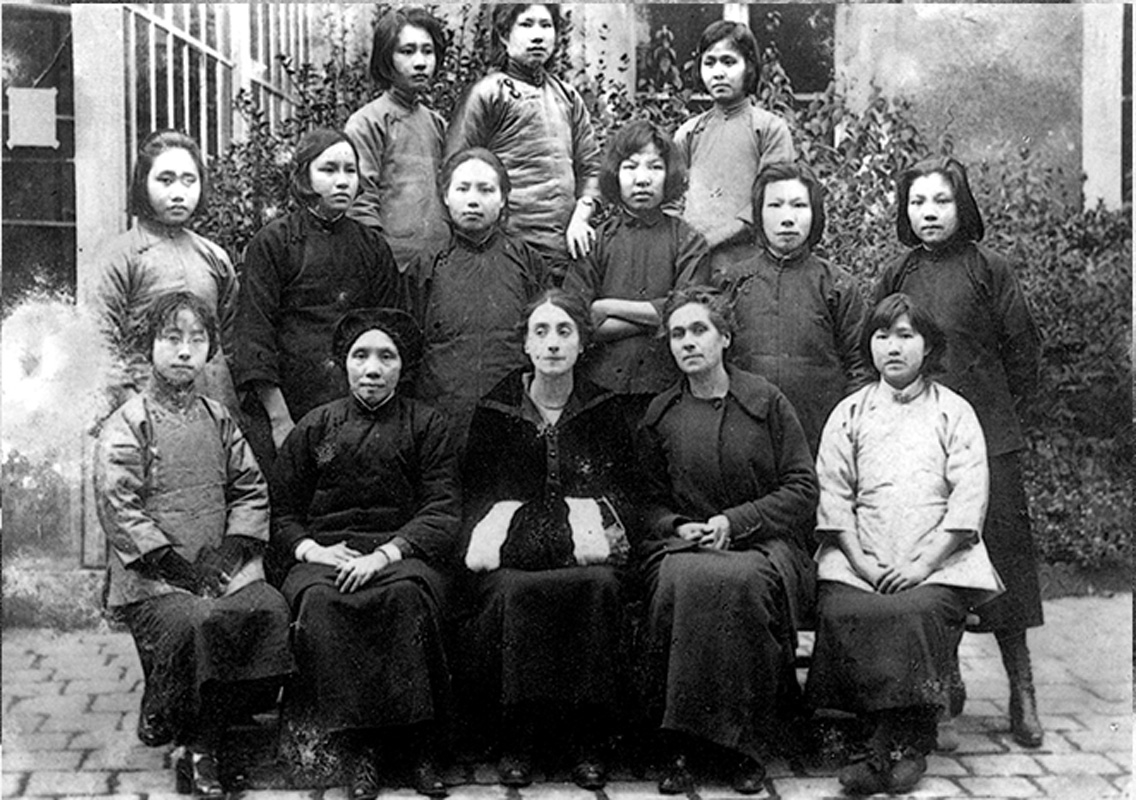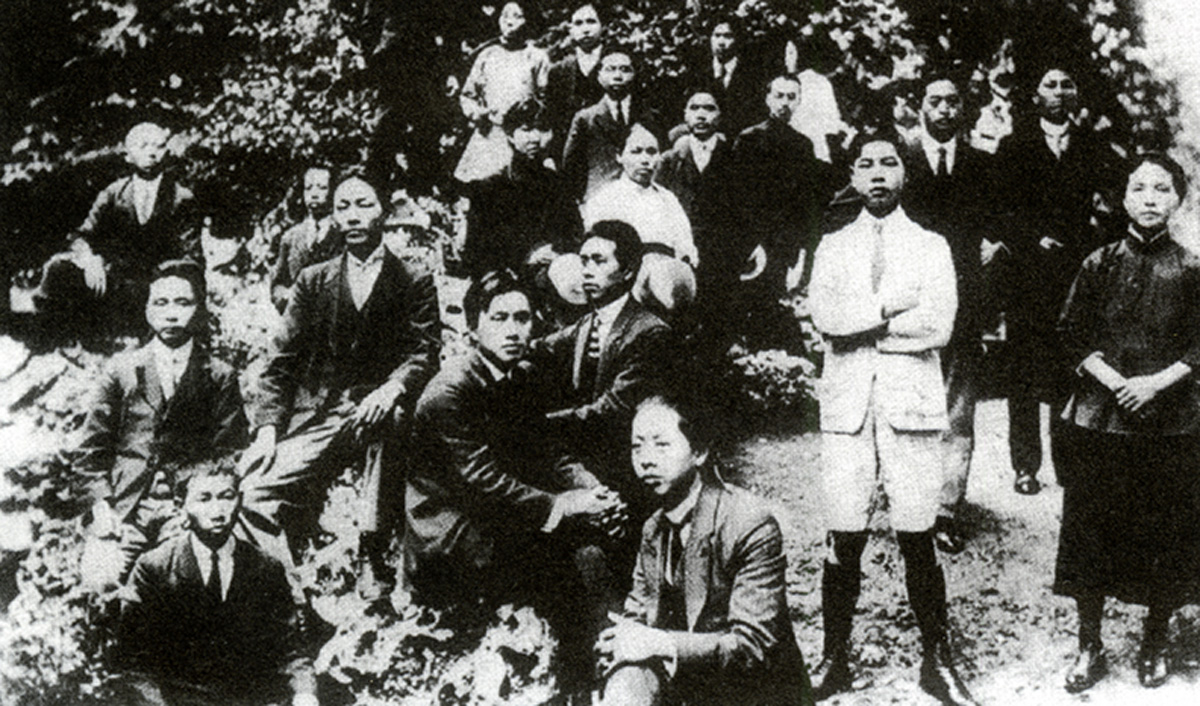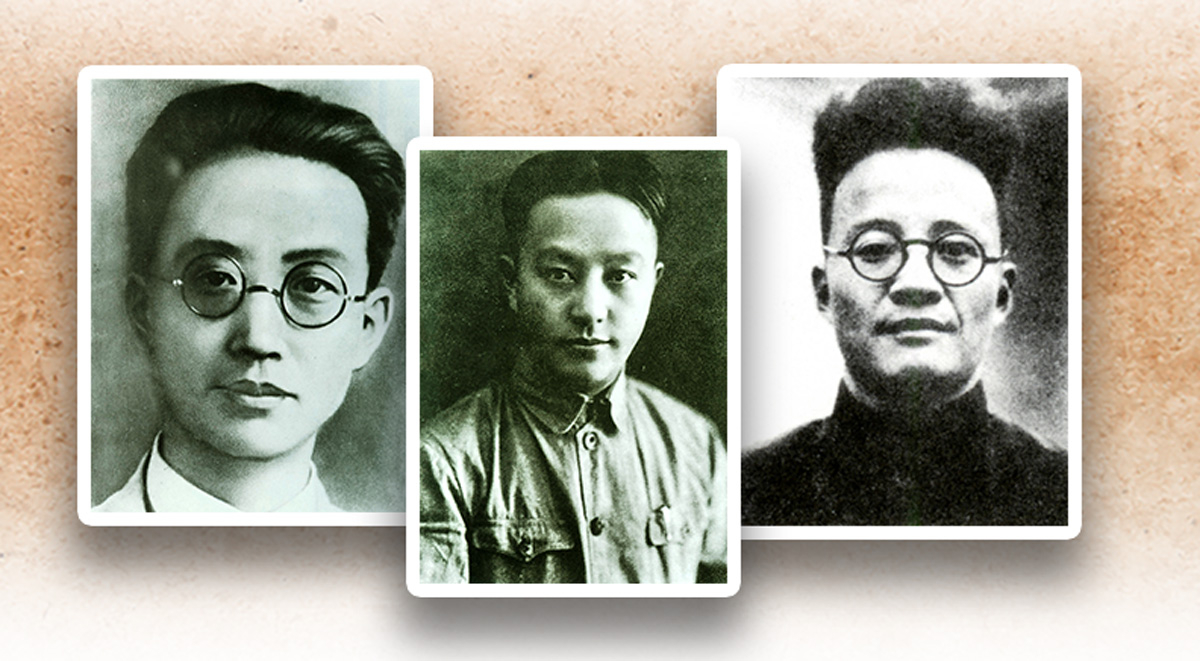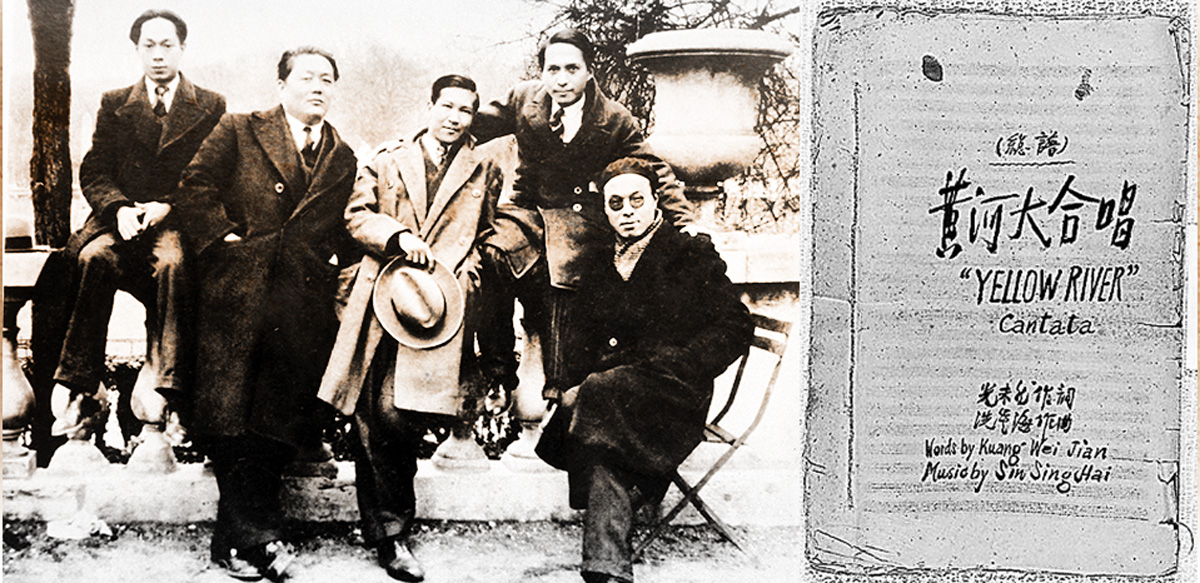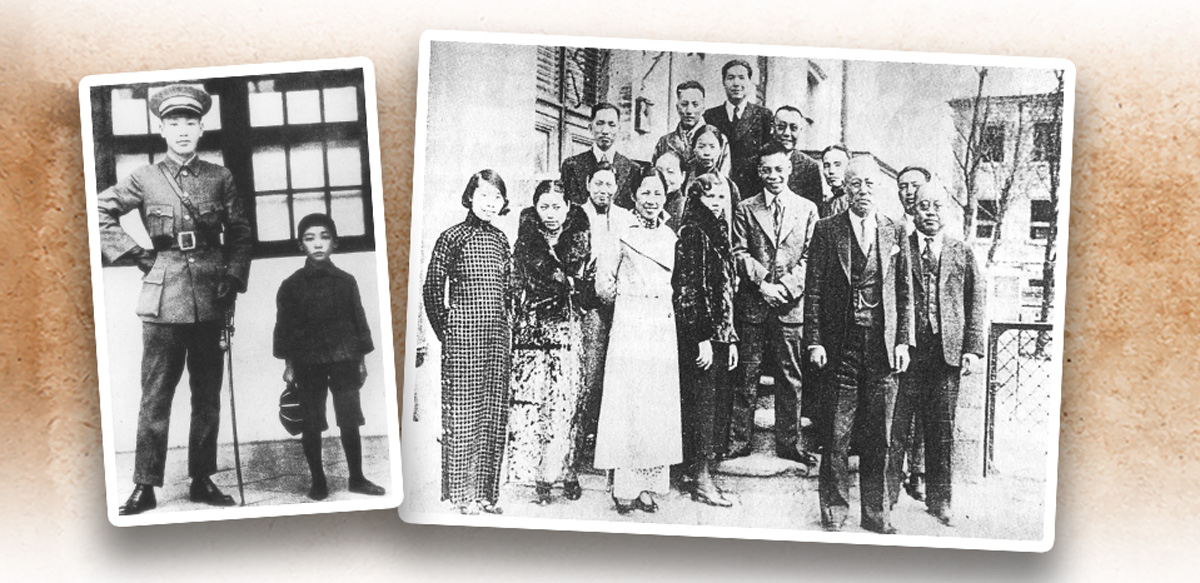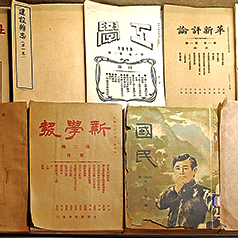The May Fourth Movement (五四運動) and the New Culture Movement (新文化運動) fueled a new trend of studying abroad. China’s massive study-abroad movement in the early modern period had three major waves. The first, which took place in the mid-to-late Qing dynasty, mostly involved officials and their families, with the preferred destination being initially Western countries, and later Japan. The second wave occurred after the May Fourth Movement in 1919, and the third took place after reform and opening-up in 1978. The post-May Fourth study-abroad trend had the following characteristics. The first was a surge in the number of those who studied abroad at their own expense or with financial support from political parties. It was necessary for many to work on the side and live frugally. Hence the movement was also known as Diligent Work-Frugal Study Movement (勤工儉學). Secondly, political parties regarded France and the Soviet Union as incubators for their future revolutionaries and so many students were sent to the two nations to learn either from the French revolutionary tradition or the Russian October Revolution experience. The Boxer Rebellion Indemnity Funds returned from the United States to China had encouraged some students to study in the United States. However, many more went to study in France and Germany. They included key leaders of the Chinese Communist Party like Zhou Enlai (周恩來), Zhu De (朱德), Cai Hesen (蔡和森), Xiang Jingyu (向警予), Li Lisan (李立三), Li Fuchun (李富春), Cai Chang (蔡暢), Chen Yi (陳毅), Deng Xiaoping (鄧小平), and Nie Rongzhen (聶榮臻). The Soviet Union also beckoned to China. Striving to reorganize the Chinese Nationalist Party into a revolutionary force, Sun Yat-sen (孫中山) exhorted his followers to “learn from the Soviets” and sent Chiang Kai-shek (蔣介石) to Russia to learn from the Soviets. Later, Chiang Kai-shek’s son Chiang Ching-kuo (蔣經國) also studied in Russia, where he became classmates with Deng Xiaoping. Since the Chinese Communist Party’s establishment in 1921, many of its party, government and military leaders studied in Russia; some notable ones are Qu Qiubai (瞿秋白), Li Lisan, Wang Ming (王明), Bo Gu (博古), Zhang Wentian (張聞天), Wang Jiaxiang (王稼祥), Liu Shaoqi (劉少奇), Ren Bishi (任弼時), Zhu De, Liu Bocheng (劉伯承) and Lin Biao (林彪). Thereby, the May Fourth Movement had a profound influence on China’s future.
|
|
Why did the New Culture Movement draw so many young students to study abroad in France or the Soviet Union? |
|
|
See answer below. |
Cai Yuanpei (蔡元培) and Li Shizeng (李石曾) established the Association of Diligent Work , Frugal Study Movement in France (留法儉學會) and sent its first cohort of students to France in November that year. Pictured is a group photo of the third cohort of Diligent Work, Frugal Study Movement students prior to their departure for France.
Pictured are the 16-year-old Deng Xiaoping and the 24-year-old Zhou Enlai, taken in 1920 and 1922 respectively during their participation in the Diligent Work-Frugal Study Movement in France.
A group photo featuring students of the Diligent Work, Frugal Study Movement in France, taken in 1920. Nie Rongzhen, the first figure from the right in the back row, was later ranked among the top ten Marshals in the People's Liberation Army along with Chen Yi, a fellow study-abroad student in France; and Zhu De, who had studied in both Germany and the Soviet Union.
A group photo featuring students of the Diligent Work, Frugal Study Movement in Europe, taken in 1921. Li Lisan, the eighth figure from the left in the front row; Cai Hesen, the tenth figure from the left in the third row and Li Weihan (李維漢), the seventh figure from the left in the back row, later became early leaders of the fledging Chinese Communist Party.
Group photo of the Diligent Work, Frugal Study Movement students in France. The middle figure in the front row is Zhou Enlai. In 1922, Zhou Enlai joined the Chinese Communist Party and served as secretary of the Chinese Youth Communist Party in Europe (中國共產主義青年團旅歐總支部).
Women also participated in the Diligent Work, Frugal Study Movement. Pictured are female Chinese students with their female French instructor. Cai Chang, the first figure from the right in the second row, later led the fledging women’s movement launched by the Chinese Communist Party.
Members of the Hunan branch of the New Citizens' Study Society (湖南新民學會) who were participating in the Diligent Work, Frugal Study Movement in France. The group photo was taken at their gathering in Montargis, France around July 6 to 10, 1920. The first figure from the right is Xiang Jingyu, a leader of the Chinese Communist Party’s fledging women’s movement.
The October Revolution’s success and the forging of the First United Front between the Chinese Nationalist Party and the Chinese Communist Party drew many young people to study in the Soviet Union. Some of them later became core members of the early Chinese Communist Party’s leadership. Among them were (pictured from left to right above) Qu Qiubai, Wang Ming and Bo Gu.
The composer Xian Xinghai (冼星海, also known as Sinn Sing Hoi) was part of the Diligent Work, Frugal Study Movement in Paris in 1929. On the left: Xian Xinghai is the middle figure in this group photo taken with his friends prior to his return to China in 1935. On the right is the cover of the handwritten draft of Yellow River Cantata (黄河大合唱), his signature work. He joined the Chinese Communist Party in 1939.
Chiang Kai-shek’s son Chiang Ching-kuo was among the wave of students who studied abroad in the 1920s. The photo on the left, taken in 1918, shows Chiang Kai-shek with the 8-year-old Chiang Ching-kuo. The photo on the right was taken prior to the return of Chiang Ching-kuo and his wife to China in 1937. It features Chiang Ching-kuo’s wife (fourth from the left, front row), Chiang Ching-kuo himself (left of his wife) and the personnel of the Chinese embassy in Moscow with their family members.
Sun Yat-sen was eager to learn from Russia’s successful October Revolution in order to reorganize the Chinese Nationalist Party and bolster its revolutionary force. In 1923 Sun Yat-sen sent Chiang Kai-shek to the Soviet Union for three months to learn Soviet ways. Chiang Kai-shek’s son, Chiang Ching-kuo, spent 12 years in the Soviet Union, an experience that was life-changing. In 1925, he arrived in the Soviet Union, took on the name Nikolai Vladimirovich Elizarov, and became classmates with the likes of Deng Xiaoping. In 1927, he publicly severed ties with his father when the latter purged the Communists inside the Chinese Nationalist Party and began persecuting and killing Communists en masse. In 1935, he married Fang Liang (方良, also known as Faina Ipat'evna Vakherevich), a native Belarusian and in 1936, he officially became a member of the Communist Party of the Soviet Union. In 1937, he returned to China with his family to serve his father’s cause.
|
|
Why did the New Culture Movement attract so many young students to study abroad in France or the Soviet Union? |
|
|
In response to China’s humiliation by advanced Western nations in the early modern era, Chinese students initially chose Europe and the United States as target destinations in order to learn from them. Later, following the Meiji Restoration and the rise of Japan after the First Sino-Japanese War, Japan became an additional popular study-abroad destination. As China continued to be exploited by its “teachers” after the establishment of the Republic of China, it strove to shape up via the May Fourth Movement and the New Culture Movement. Young students were inspired by the twin spirits of democracy and science as well as the successes of the French Revolution and the Russian October Revolution. They were determined to combat despotism by joining a revolutionary party. Many realized that they must first learn from the French and Russians, then return to serve their motherland. |
Source of most photos used in this feature piece: Fotoe (pictures 1-6, 10), Visual China Group (pictures 7 -9), misc. photo sources.




